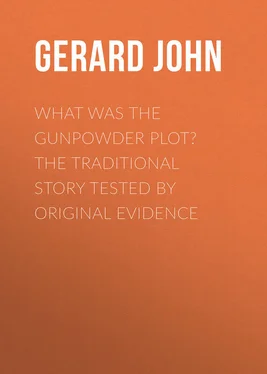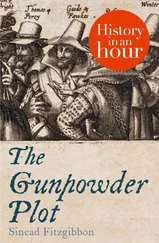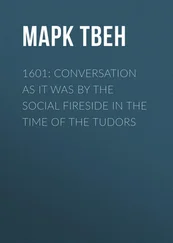John Gerard - What was the Gunpowder Plot? The Traditional Story Tested by Original Evidence
Здесь есть возможность читать онлайн «John Gerard - What was the Gunpowder Plot? The Traditional Story Tested by Original Evidence» — ознакомительный отрывок электронной книги совершенно бесплатно, а после прочтения отрывка купить полную версию. В некоторых случаях можно слушать аудио, скачать через торрент в формате fb2 и присутствует краткое содержание. Жанр: foreign_antique, foreign_prose, на английском языке. Описание произведения, (предисловие) а так же отзывы посетителей доступны на портале библиотеки ЛибКат.
- Название:What was the Gunpowder Plot? The Traditional Story Tested by Original Evidence
- Автор:
- Жанр:
- Год:неизвестен
- ISBN:нет данных
- Рейтинг книги:5 / 5. Голосов: 1
-
Избранное:Добавить в избранное
- Отзывы:
-
Ваша оценка:
- 100
- 1
- 2
- 3
- 4
- 5
What was the Gunpowder Plot? The Traditional Story Tested by Original Evidence: краткое содержание, описание и аннотация
Предлагаем к чтению аннотацию, описание, краткое содержание или предисловие (зависит от того, что написал сам автор книги «What was the Gunpowder Plot? The Traditional Story Tested by Original Evidence»). Если вы не нашли необходимую информацию о книге — напишите в комментариях, мы постараемся отыскать её.
What was the Gunpowder Plot? The Traditional Story Tested by Original Evidence — читать онлайн ознакомительный отрывок
Ниже представлен текст книги, разбитый по страницам. Система сохранения места последней прочитанной страницы, позволяет с удобством читать онлайн бесплатно книгу «What was the Gunpowder Plot? The Traditional Story Tested by Original Evidence», без необходимости каждый раз заново искать на чём Вы остановились. Поставьте закладку, и сможете в любой момент перейти на страницу, на которой закончили чтение.
Интервал:
Закладка:
More especially do difficulties connect themselves with the gunpowder itself. Of this, according to the lowest figure given us, there were over four tons. 173 173 The amount, it would seem, cannot have been less than this. A barrel of gunpowder, containing four firkins, weighed 400 lb., and had the casks in the cellar all been barrels, in the strict sense of the word, the amount would therefore have exceeded six tons. Some of these casks, we are told, were small, but some were hogsheads. The twenty barrels first laid in are described as "whole barrels." (Faukes, January 20th, 1605-6.)
How, we may ask, could half a dozen men, "notorious Recusants," and bearing, moreover, such a character as we have heard, without attracting any notice, and no question being asked, possess themselves of such a quantity of so dangerous a material? 174 174 An interesting illustration of this point is furnished by a strange piece of evidence furnished by W. Andrew, servant to Sir E. Digby. Sir Everard's office was to organize the rising in the Midlands, after the catastrophe, but he apparently forgot to supply himself with powder till the very eve of the appointed day. Andrew averred that on the night of November 4th, his master secretly asked him to procure some powder in the neighbouring town, whereupon he asked, "How much? A pound, or half a pound?" Sir Everard said 200 or 300 lb. Deponent purchased one pound. (Tanner MSS. lxxv. f. 205 b.) One Matthew Batty mentioned Lord Monteagle as having bought gunpowder. ( Ibid. v. 40.) In the same collection is a copy of some notes by Sir E. Coke (f. 185 b), in which the price of the powder discovered is put down as £200, i. e. some £2,000 of our money.
How large was the amount may be estimated from the fact that it was more than a quarter of what, in 1607, was delivered from the royal store, for all purposes, and was equal to what was thought sufficient for Dover Castle, while there was no more in the four fortresses of Arcliffe, Walmer, Deal, and Camber together. 175 175 Gunpowder was measured by the last = 2,400 lb. (Tomline's Law Dictionary .) In 1607 there were delivered out of the store 14 lasts and some cwts. In 1608 the amount in various strong places is entered as: " Dover Castle , 4 lasts; Arcliffe Bullwark , 1 last; Walmer , 1 last, 8 cwt.; Deal Castle , 1 last; Sandown Castle , 2 lasts, etc.; Sandgate , 1 last; Camber , 1 last."
The twenty barrels first procured were first, as we have seen, stored beyond the Thames, at Lambeth, whence they had to be ferried across the river, hauled up the much frequented Parliament Stairs, carried down Parliament Place, as busy a quarter as any in the city of Westminster, and into the building adjoining the Parliament House, or the "cellar" beneath the same. All this, we are to suppose, without attracting attention or remark. 176 176 The position and character of the "cellar" admit of no doubt, as appears from the testimony of Smith's Antiquities of Westminster , Brayley and Britton's Ancient Palace of Westminster , and Capon's notes on the same, Vetusta Monumenta , v. They are, however, inconsistent with some circumstances alleged by the government. Thus, Sir Everard Digby's complicity with "the worst part" of the treason, which on several occasions he denied, is held to be established by a confession of Faukes, which cannot now be found among the State Papers, but which is mentioned in Sir E. Coke's speech upon Digby's arraignment, and is printed in Barlow's Gunpowder Treason , p. 68. In Sir E. Coke's version it runs thus: "Fawkes, then present at the bar, had confessed, that some time before that session, the said Fawkes being with Digby at his house in the country, about which time there had fallen much wet, Digby taking Fawkes aside after supper, told him he was much afraid that the powder in the cellar was grown damp, and that some new must be provided, lest that should not take fire." Seeing, however, that the powder stood above ground, within a most substantial building, and could be reached by the rain only if this should first flood the Chamber of the Peers, it does not seem as if the idea of such a danger should have suggested itself. Another interesting point in connection with the "cellar" is that the House of Lords having subsequently been removed to the Court of Requests, and afterwards to the Painted Chamber, "Guy Faukes' Cellar" on each occasion accompanied the migration. From Leigh's New Picture of London we find that in 1824-5, when the Court of Requests was in use, and the old cellar had completely disappeared, Guy's Cellar was still shown; while a plate given in Knight's Old England , and elsewhere, represents a vault under the Painted Chamber, not used as the House of Lords till after 1832. Such a cellar seems to have been considered a necessary appurtenance of the House.
The conspirators, while making these material preparations, were likewise busy in settling their plan of action when the intended blow should have been struck. It was by no means their intention to attempt a revolution. Their quarrel was purely personal with King James, his Council, and his Parliament, and, these being removed, they desired to continue the succession in its legitimate course, and to seat on the throne the nearest heir who might be available for the purpose; placing the new sovereign, however, under such tutelage as should insure the inauguration of a right course of policy. The details of the scheme were of as lunatic a character as the rest of the business. The confederates would have wished to possess themselves of Prince Henry, the king's eldest son; but as he would probably accompany his father to the opening of Parliament, and so perish, their desire was to get hold of his brother, the Duke of York, afterwards Charles I., then but five years old. It was, however, possible that he too might go to Parliament, and otherwise it might not improbably be impossible to get possession of him: in which case they were prepared to be satisfied with the Princess Elizabeth, 177 177 Afterwards the Electress Palatine.
or even with her infant sister Mary, for whom, as being English born, a special claim might be urged.
Such was the project in general. When we come to details, we are confronted, as might be anticipated, with statements impossible to reconcile. We are told, 178 178 Gardiner, Hist. i. 245; Lingard, vii. 59; T. Winter, November 23rd, 1605.
that Percy undertook to seize and carry off Duke Charles; and again, 179 179 Faukes, November 17th, 1605.
that, despairing of being able to lay hands upon him, they resolved "to serve themselves with the Lady Elizabeth," and that Percy was one of those who made arrangements for seizing her; 180 180 Harry Morgan, Examination (R.O.), November 12th, 1605.
and again, that having learnt that Prince Henry was not to go to the House, they determined to surprise him, "and leave the young Duke alone;" 181 181 T. Winter, November 23rd and 25th, 1605. As the information about Prince Henry was alleged to have been communicated by Lord Monteagle, the passage has been mutilated in the published version to conceal this circumstance.
and once more, that they never entered into any consultation or formed any project whatever as to the succession. 182 182 Faukes, November 5th, 1605.
Still more serious are the contradictions on another point. We are told, on the one hand, that a proclamation was drawn up for the inauguration of the new sovereign – whoever this was 183 183 Sir E. Digby, Barlow's Gunpowder Treason , App. 249.
– and, on the other, that the associates were resolved not to avow the explosion to be their work until they should see how the country took it, or till they had gathered a sufficient force, 184 184 Faukes, November 17th, 1605.
and accordingly that they had no more than a project of a proclamation to be issued in due season. But, again, it is said 185 185 Digby, ut sup.
that Catesby on his way out of town, after the event, was to proclaim the new monarch at Charing Cross, though it is equally hard to understand, either how he was to know which of the plans had succeeded, and who that monarch was to be, – whether a king or a queen, – or what effect such proclamation by an obscure individual like himself was expected to produce; or how this, or indeed any item in the programme was compatible with the incognito of the actors in the great tragedy.
Интервал:
Закладка:
Похожие книги на «What was the Gunpowder Plot? The Traditional Story Tested by Original Evidence»
Представляем Вашему вниманию похожие книги на «What was the Gunpowder Plot? The Traditional Story Tested by Original Evidence» списком для выбора. Мы отобрали схожую по названию и смыслу литературу в надежде предоставить читателям больше вариантов отыскать новые, интересные, ещё непрочитанные произведения.
Обсуждение, отзывы о книге «What was the Gunpowder Plot? The Traditional Story Tested by Original Evidence» и просто собственные мнения читателей. Оставьте ваши комментарии, напишите, что Вы думаете о произведении, его смысле или главных героях. Укажите что конкретно понравилось, а что нет, и почему Вы так считаете.












